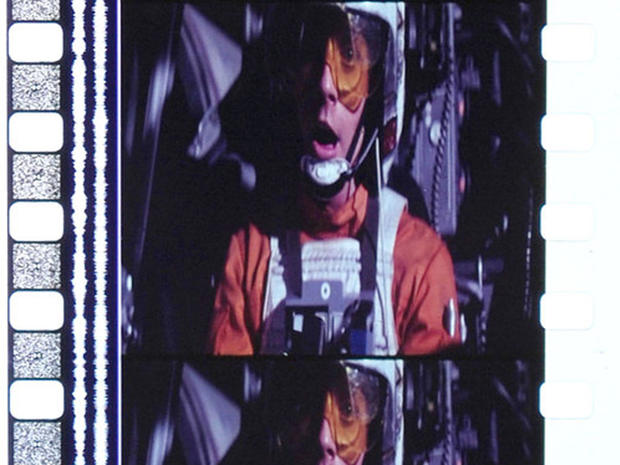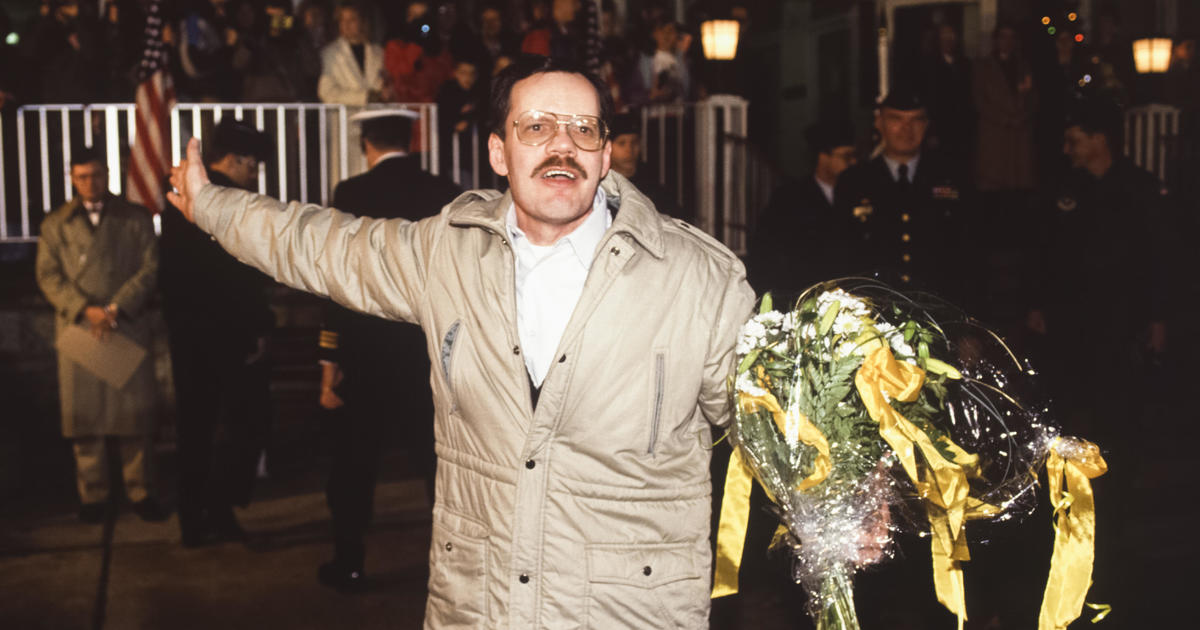Landmarks in Dolby Stereo films
Ray Dolby, the engineer and inventor who helped revolutionize movie soundtracks, died at his home in San Francisco Thursday, September 12, 2013, at the age of 80.
Born in Portland, Ore., Dolby studied at Stanford and Cambridge Universities before founding Dolby Laboratories in London. The company (which he later moved to California) became an industry leader in audio technology -- creating and improving recording and reproduction systems for music and film studios, theaters, and home and car audio.
Much of the initial success was in Dolby's noise reduction processes, which eliminated tape hiss from recordings and playback and improved the viability of tape cassettes for home audio.
Its greatest success, however, and what made the name Dolby recognizable to the vast public, was in bringing noise reduction to the movies, boosting dynamic range, and making sound as much a marketing component for cinemas in the 1970s and 1980s as visual effects.
Click through each page of this article to view and hear video clips from landmark films released with Dolby sound formats. (Headphones required!)
"Lisztomania" (1975)
Stanley Kubrick's "A Clockwork Orange" (1971) was not released theatrically in Dolby sound, but it was the first motion picture to use Dolby noise reduction equipment during the recording/mixing stage, showing off Walter Carlos' electronic score spectacularly.
While the British thriller "Callan" starring Edward Woodward was the first film to feature release prints with a Dolby-encoded optical soundtrack, Ken Russell's "Lisztomania," a psychedelic interpretation of the life of Frank Liszt starring The Who's Roger Daltry, was the first Dolby release in stereo.
Dolby Stereo was a deceptively simple concept: with two optical soundtracks on the film strip, additional audio information was encoded as out-of-phase signals. A decoder on the projector would then separate the out-of-phase sound which would translate as additional channels, producing four channels of sound to be spread across the cinema.
What this clip from "Lisztomania" (which features a Frankenstein monster-like incarnation of Richard Wagner, a slaughter of Jews, and Nazi girls with voodoo dolls -- hey, it's a Ken Russell film!) lacks in cohesion makes up for with audio innovation of its stereo effects.
Other films released with Dolby processing included the Barbra Streisand-Kris Kristofferson musical "A Star Is Born" and the sci-fi flick "Logan's Run." However, few cinemas were equipped to handle such prints.
"Star Wars" (1977)
Since the widescreen 70mm sound mixes of the 1950s and '60s, six-track stereophonic tracks -- usually on magnetic strips added to the film print -- were mixed to present five channels of sound spread across the widescreen (left, left-center, center, center-right, right), with a sixth surround channel in the rear of the auditorium, usually reserved for music, sound effects or added echo effects and reverb which would surround the audience.
Because there was little spatial differentiation in dialogue between, say, left and center, the mixers for "Star Wars" kept the L-C-R tracks, but used the remaining two front tracks for isolated, low-frequency effects (LFE, a.k.a. "baby boom" tracks) -- perfect for space battles!
Originally Dolby Sound was incompatible with mono projectors, so "Star Wars" was released in three different sound mixes: 70mm six-track magnetic stereo, 35mm Dolby stereo optical, and 35mm optical mono, with slight editorial differences among them.
The soundtrack, boasting not just vivid sound effects but also John Williams' music, became as much a star of the film as the visual effects.
The success of "Star Wars" and "Close Encounters of the Third Kind" not only inspired more film producers to use Dolby Stereo, but also spurred more and more theater owners to shell out for upgrades to their sound systems.
While there were fewer than 50 theaters in the U.S. equipped to play 70mm Dolby when "Star Wars" bowed, by 1982 there were 2,000.
"Superman" (1978)
The sound mixers of "Superman," which received a very wide 70mm release, experimented with the film's surround tracks, splitting them to incorporate left and right information. However, most cinemas were not set up to decode the information in this format, and it wasn't until 1979 when "Apocalypse Now" made full use of 5.1 stereo (also referred to as quintaphonic stereo sound).
There was also an increase in the release of 70mm prints with six-track Dolby soundtracks. Once the province of widescreen roadshow epics like "Spartacus" and "2001," 70mm was used more and more frequently in the 1980s despite its expense (a 70mm print could cost about 10 times what it cost to create a 35mm print) by all genres of films, from "Poltergeist," "Annie" and "Rocky III" to "Sharky's Machine."
"Apocalypse Now" (1979)
Walter Murch's sound design for Francis Ford Coppola's fever dream of the Vietnam War was a stupendous technological and artistic success, and set the standard for all subsequent films of such scope.
Above: The attack on the Vietnamese village, in which helicopters broadcast Wagner's "Ride of the Valkyries" while raining missiles onto the inhabitants. (Warning: Some dialogue NSFW.)
"Altered States" (1980)
Ken Russell again pushed the envelope of sound with his sci-fi head trip of a scientist (William Hurt) experimentinq with hallucinogenic drugs. "Altered States" was one of several Dolby films ("Outland" and "Wolfen" were others) marketed with the title MegaSound, which was basically the 70mm baby boom tracks turned up REALLY LOUD.
Extra amps and speakers were added to boost the low frequency effects tracks (not dissimilar to Sensurround from the 1974 "Earthquake"), which meant people in the lobby waiting for the next show to start got a preview of coming rumbles.
"Robocop" (1987)
Dolby SR (for Spectral Recording) boosted the dynamic range of the soundtrack (up 25 dB in higher frequencies), and made optical prints sound almost as rich as magnetic soundtracks.
"Robocop" (view clip above, in which Peter Weller battles the ED-209 droid) and "Innerspace" were the first films released in the Dolby SR format.
"Batman Returns" (1992)
Tim Burton's comic book actioner was the first film released in Dolby Digital. The process replaced the analog optical soundtrack with digital information imprinted on the side of the 35mm film print (although optical soundtracks were also printed in case the theater's digital decoder conked out).
Sold as having the dynamic range of digital recordings, the 5.1 surround sound sounded so good that the cost difference between 70mm and 35mm prints became harder and harder to justify -- and the number of films blown up for 70mm release plummeted.
"Star Wars Episode I: The Phantom Menace" (1999)
The first of the "Star Wars" prequels, introducing Darth Vader as a cute tyke, also introduced a new sound format, Dolby Digital Surround EX. This altered the matrix of information on the rear channels (and required additional speakers).
"Toy Story 3" (2011)
Dolby Surround 7.1 uses eight discrete audio channels, increasing the sense of distinct audio fields in the rear of the theater. Pixar's "Toy Story 3," a 3-D animated film, was the first theatrical release in this format.
"Brave" (2012)
Dolby Atmos expands the illusion of an infinite number of channels, increasing the 3-D effect of sounds, including from overhead, in a 62.2 surround sound layout.
Pixar's "Brave" was the first film released in the format. Other titles include "Life of Pi," "The Hobbit: An Unexpected Journey," "Oz the Great and Powerful" and "Star Trek Into Darkness."
A Dolby Digital Surround EX trailer.
Below: A trailer for Dolby Atmos.





